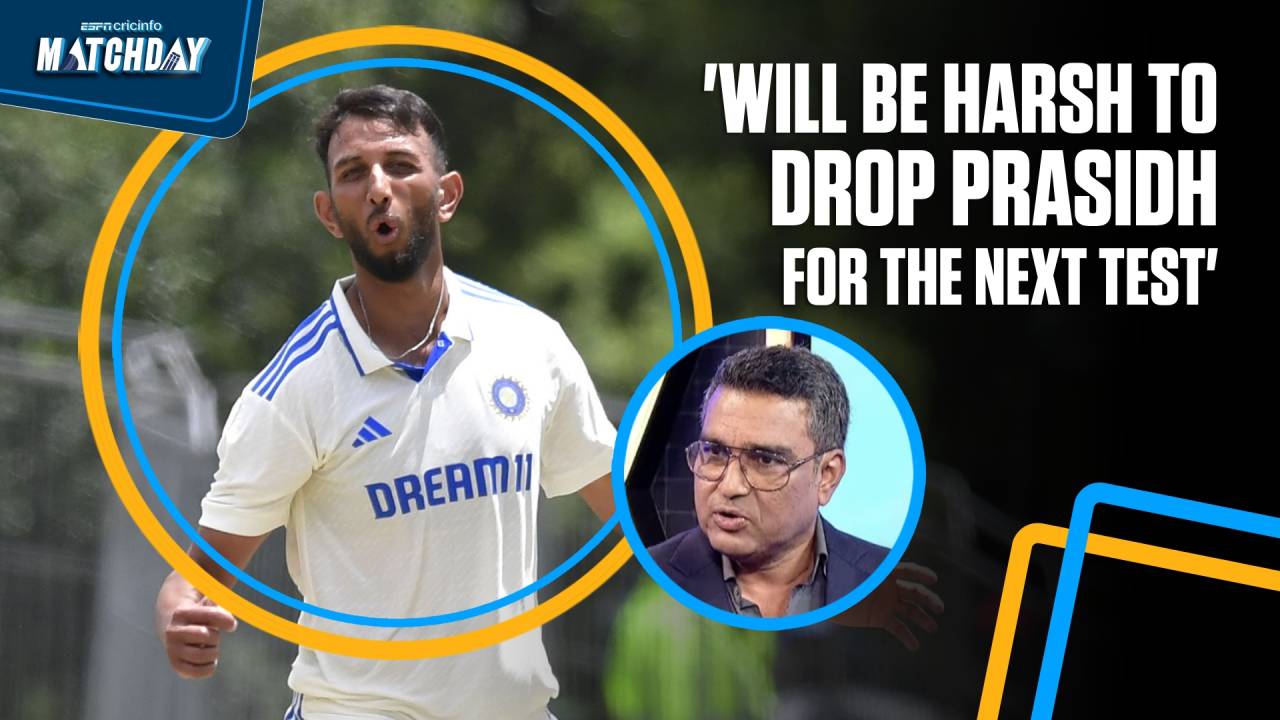How India can bowl better in the second Test against South Africa
They need to do more damage with the new ball and be better at damage control with the old one
Sidharth Monga
01-Jan-2024
It is common to hear and say that the BCCI has been making so much more money for so much longer than the next-richest board that it should put on the park a side that wins everything. The point has been reiterated in the aftermath of the loss in Centurion.
It is a valid point. The riches of the board do undeniably provide India a competitive advantage. There is definitely a case to be made for the money to be spent better for a wider outreach, for there to be better preparation for certain events, but if you come down to the brass tacks, Test cricket is such a unique phenomenon in sport that your financial riches can only take you so far.
You just can't replicate the demands of Test cricket in any other format or at any other level. The conditions, the duration, the quality of competition, there is nothing outside actual Test cricket that can prepare you for it. And, as Rohit Sharma said, hosts are not always sporting enough to provide you tour games that simulate anything close to the conditions or the opposition that you face at a live game.
Look at the Centurion Test. Or even the last series in South Africa. India's bowlers have just not been able to draw the same amount of seam movement or uneven bounce as South Africa's bowlers. It is a function of the height of the bowlers and also the ability to bowl in the 140s kph consistently.
Those pitches reward hit-the-deck bowlers more than kiss-the-surface ones. On hard, green surfaces with heavy moisture and indentations, as the match goes on, you have to let the ball sit into the surface, which a higher release helps you do. That's why Prasidh Krishna was selected ahead of Mukesh Kumar, who comes with a much stronger body of work in first-class cricket.
In the initial exchanges, India even bowled better lengths than South Africa did and also drew more out of the pitch. In the first 20 overs of the first two innings, India drew 36 false responses and South Africa 28. From overs 20.1 to 67.4 in the first two innings, South Africa drew 78 false responses to India's 47.
Once the effects of the new ball began to wear off, not only did South Africa bowl better areas, they drew more out of the pitch than not just India but than what they themselves did with the new ball. As the innings progressed, India lost out on the new-ball advantage, then the effects of the heavy roller disappeared, the indentations grew, and height became the clincher.

India's bowlers need to be more disciplined with the old ball•Getty Images
No amount of money can suddenly produce tall bowlers. In their history, India have had perhaps only two hit-the-deck bowlers for a considerable period of time: Javagal Srinath and Ishant Sharma. There is no tall bowler bowling in the 140s kph in domestic first-class cricket. The riches can be used for a wider outreach - and they should be - but those results begin to show in decades not in two years.
Against bowlers with superior gifts for Centurion-like conditions, there is only so much any team with similar physical attributes as India's squad could have done. Yet the beauty of the sport also lies in overcoming such disadvantages through better disciplines and preparation. We know the preparation hasn't been great. What India can strive to do in Cape Town is exercise better disciplines for longer because the conditions are unlikely to change suddenly, and nor is a tall bowler going to emerge out of the blue.
What India have in their control is not to bowl as wide as they did. Not only were they easier to leave, they also ended up giving away relatively less risky runs after the early exchanges. You just can't concede 145 and 136 runs in two out of three consecutive sessions in such helpful conditions.
If you exercise control and hang in for long enough, the element of luck also becomes critical. On the surface, it didn't look like luck was on the Indian side. In the first 11 overs, they took the edge or beat the bat 26 times for just one wicket. When South Africa bowled the first time around they did so 17 times in 11.1 overs for three wickets.
However, India's batters did push away from their body more than Dean Elgar and Tony de Zorzi did. Nor did the angle from over the wicket help India's bowlers. If the conditions remain similar, India's new-ball bowlers will do well to move around the wicket immediately to the left-hand batters.
It is crucial for India to move into the weaker or less-experienced batters by the time their natural handicap begins to show up. And once it does, they need to show much better control with the old ball and force mistakes out of the runs-deprived batters. More damage with the new ball and better damage control with the old ball is all India can hope for.
Sidharth Monga is a senior writer at ESPNcricinfo
